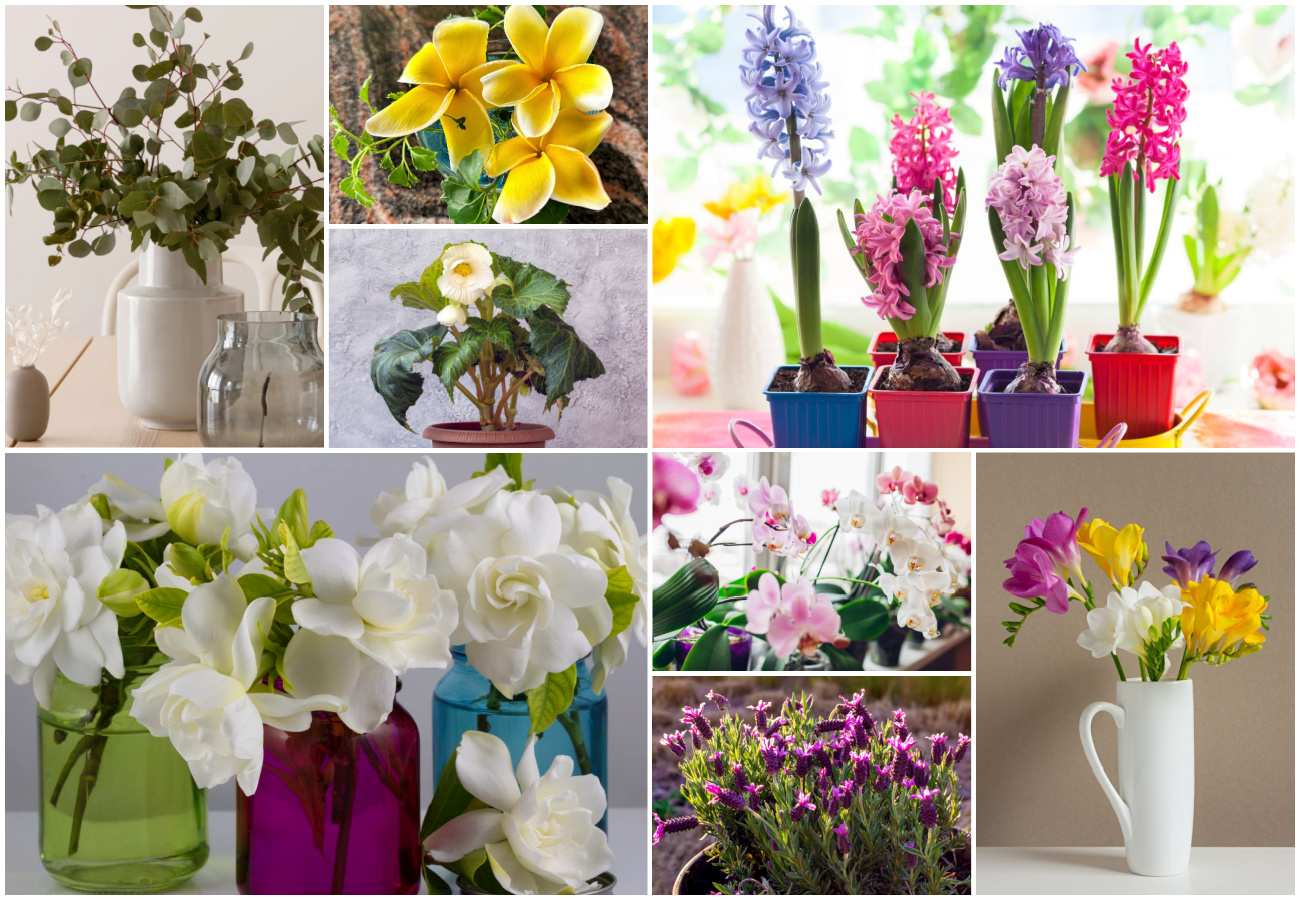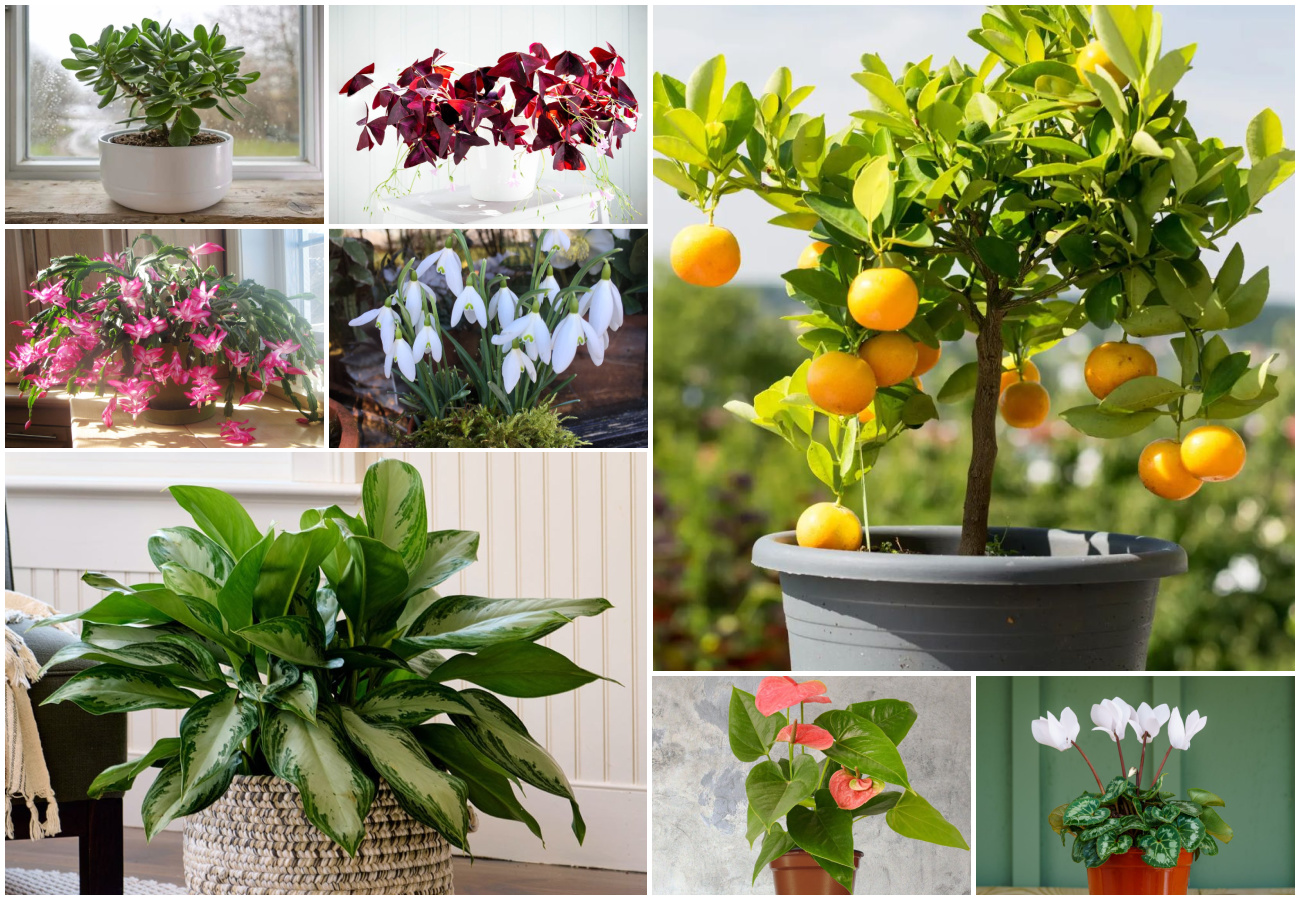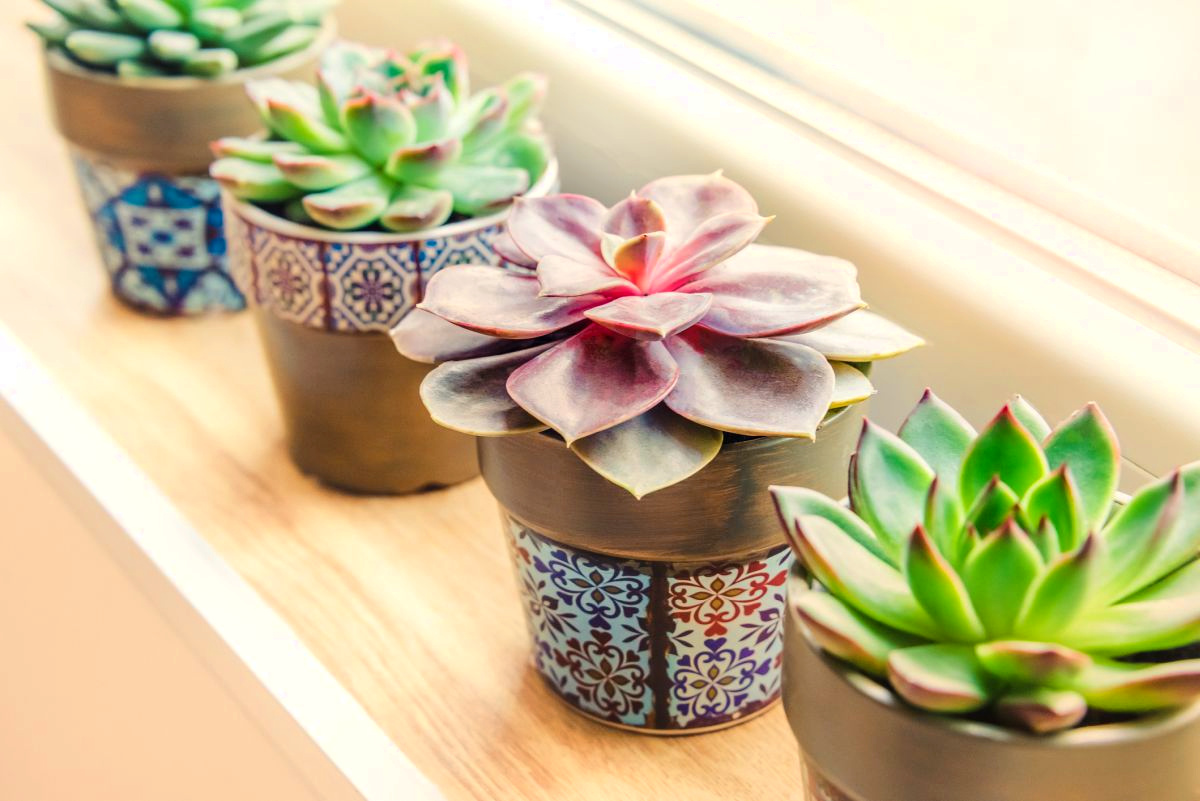Ficus Triangularis Variegata, commonly known as the “variegated ficus triangularis”, is a rare ornamental plant that has bright green variegated leaves with a cream-yellow border. Their variegated triangular-shaped leaves of different sizes have a unique look and stand out among other ficus houseplants.
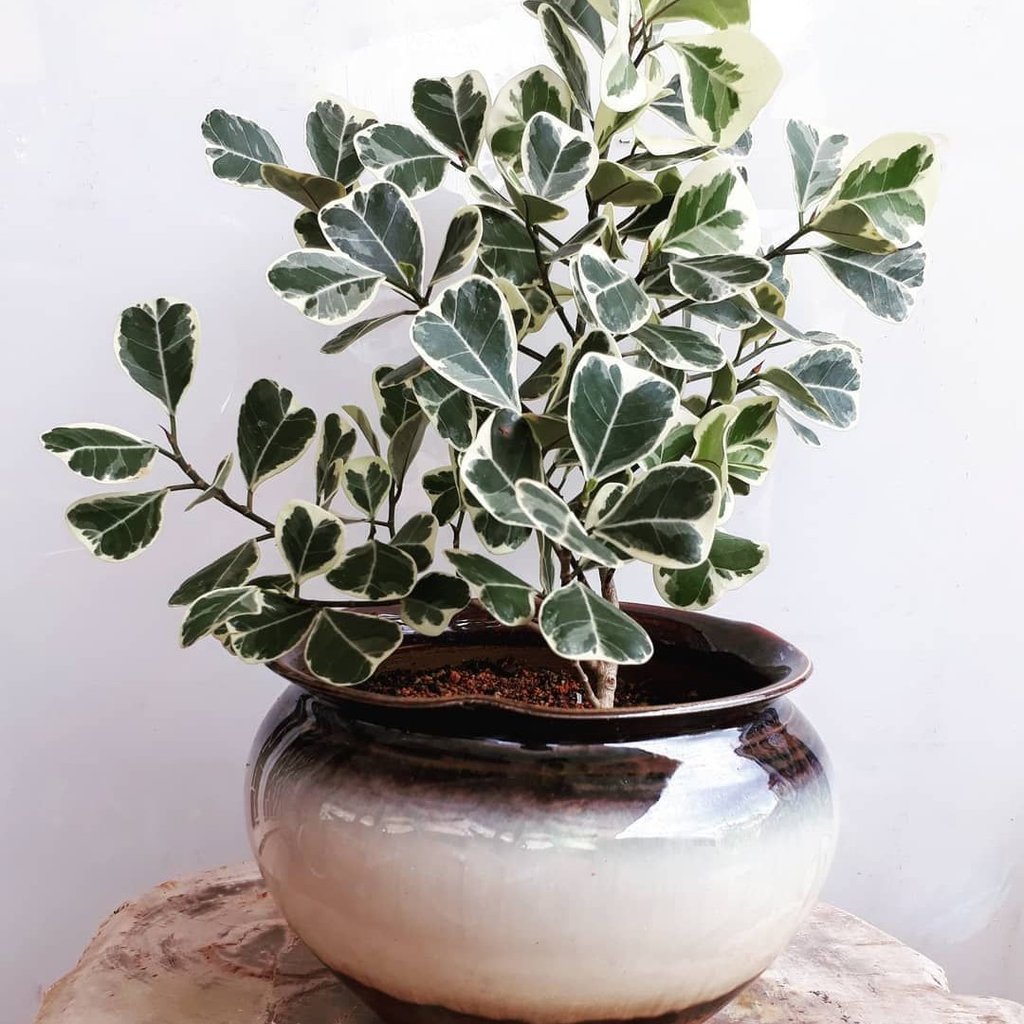
Ficus triangularis variegata is the variegated version of the Ficus triangularis plant, which has greenish-triangularly-shaped leaves with a glossy appearance. Both plants are ornamental shrubs, generously covered with triangular foliage with rounded edges. The main distinguishing feature between these two plants lies in the color of their leaves. The Ficus triangularis has completely glossy green leaves, while the variegated variety has a greenish-yellow center with a milky white border.
The Ficus triangularis is a great beginner plant as it requires less maintenance compared to other tropical houseplants. They perform well as both indoor and outdoor plants, provided a sustainable growing environment is provided. When growing outdoors, ensure that the environment is warm enough. Do not allow the temperature to go below 55 degrees Fahrenheit, as this causes slow growth. Therefore, move the plant indoors when the temperature begins to drop.
The variegated ficus triangularis is a member of the Moraceae family and rarely produces any fruit. It is advisable to wear gloves when handling the ficus variegated plants as their sap is toxic to pets and can cause skin irritation for humans. They also do not appreciate unnecessary relocation. Therefore, avoid moving them around.
Native to South and West Africa, the variegated ficus can grow to a staggering height of 8 feet with a spread of 4 feet. The optimum temperature for healthy growth should be in the range of 65 to 85 degrees Fahrenheit (18 to 29 degrees Celsius).
| Scientific name | Ficus Triangularis Variegata. |
| Common name | Variegated Ficus Triangularis. |
| Origin | South and West Africa. |
| Size | 8 feet tall and 4 feet wide |
| Lighting | Full sun. |
| Soil | Moist but also well-draining soil. |
| Temperature | 65 to 85 degrees Fahrenheit (18 to 29 degrees Celsius). |
| Fertilizer | Diluted well-balanced fertilizer. |
| Toxicity | Toxic if ingested. |
| Propagation | Stem cutting. |
Zamioculcas Raven Care
Ficus plants in general are known for being fussy and selective when it comes to maintenance, but the variegated ficus triangularis is an exception.
When grown in full light, moist soil, and optimal temperature and humidity, the ficus variegated triangularis will grow healthy and strong.
Light Requirements
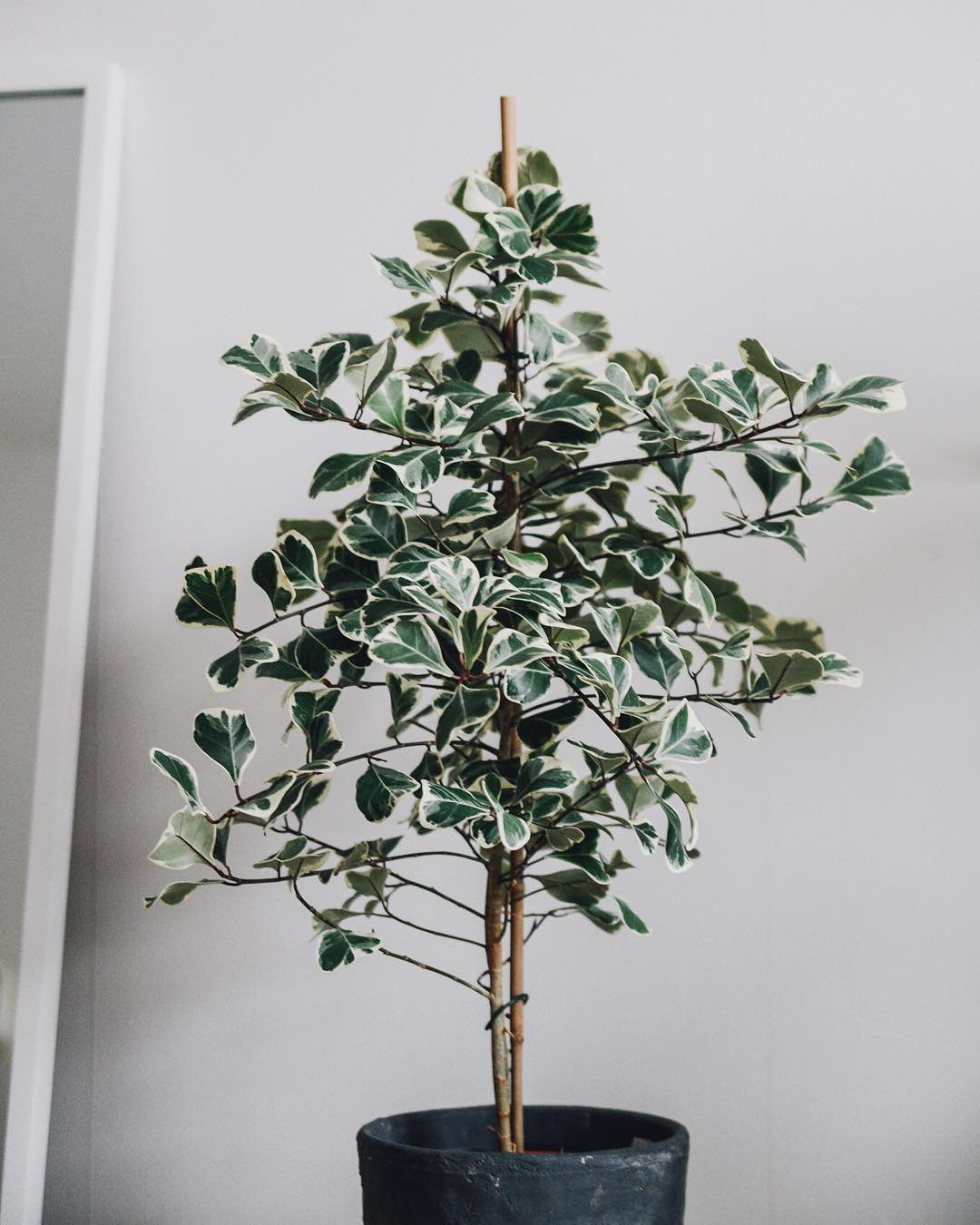
The Ficus triangularis variegata is not picky when it comes to its lighting needs. It needs to be exposed to full, bright but filtered sunlight to prevent leaf burn. Although the variegated ficus can tolerate medium light, leaving the plant under such lighting conditions over a long period can cause it to lose its variegation, look dull, and drop its leaves. The brighter the light, the happier the plant.
When growing indoors, the best location for the variegated ficus triangularis is close to either an east-facing or west-facing window. The east-facing window provides access to early morning sunlight and, at the same time, provides a bit of shade against the afternoon scorching sun, while the west-facing window provides access to the afternoon sun. Ensure to use a filter when the sun becomes intense in the summer period to prevent leaf burns.
For outdoor cultivation, move the plant indoors and grow under a grow light when the temperature begins to go below 60 degrees Fahrenheit. Cold and drafty weather conditions cause the plant to drop its leaves.
Soil Requirements
The best soil for the ficus triangularis Variegata is nutrient-rich, moist, aerated, and well-draining soil that dries out quickly. Always allow the soil to partially dry out before watering.
For a more aerated and porous soil, add perlite, coco coir, or fine moss to your potting mix to aid drainage. Ensure the pot used has draining holes at the bottom to allow the escape of excess water.
Water Requirements
Watering of the ficus Triangularis Variegata is straightforward. Water the plant whenever the soil is partially or completely dry.
You can use a moisture meter to determine the level of soil dryness. Whenever the top half of the soil dries out, give the plant a good soak until water starts dripping out through the drainage holes at the bottom of the pot. This helps prevent waterlogging of the soil. Repeat this process until you understand the plant needs to be able to develop a good watering schedule.
Fertilizer Requirements
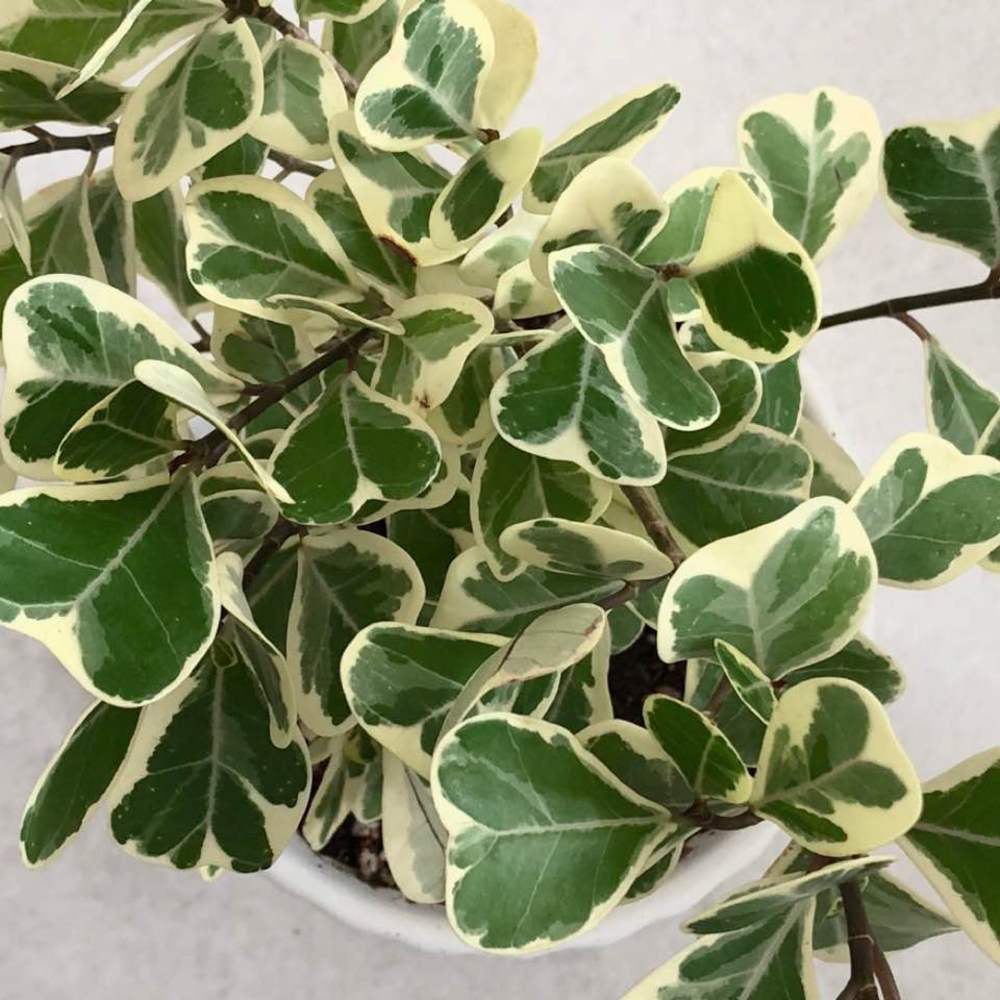
Fertilization of the ficus triangularis variegata is best done during the warmer seasons. Avoid adding fertilizer during the winter season when the plant is in dormancy as this will cause root burn.
Use a well-balanced organic fertilizer diluted to half its strength to feed your ficus plant. Fertilization can be done monthly, beginning from the end of the dormancy period of the plant to the start of the winter season.
Temperature And Humidity
Ficus triangularis variegata plants love warm and humid environments. Most household temperatures are good enough for the healthy growth of the ficus plant, provided they are well lit and away from drafts. A cold environment might cause the plant to drop its leaves.
Also, young variegated ficus triangularis plants need more humidity compared to adult plants.
When growing indoors, keep the temperature between 65 and 85 degrees Fahrenheit (18 and 29 degrees Celsius) and the humidity between 50 and 60%. Use a humidifier to add more humidity as your plants will thank you for it.
Pruning
The best time for pruning the ficus triangularis variegata is during the spring season. Pruning can help control the size and shape of the plant. Using clean and disinfected scissors, cut out any part of the plant that’s growing excessively.
Leggy branches without leaves can be pruned down as this gives the plant a bad look.
Propagation
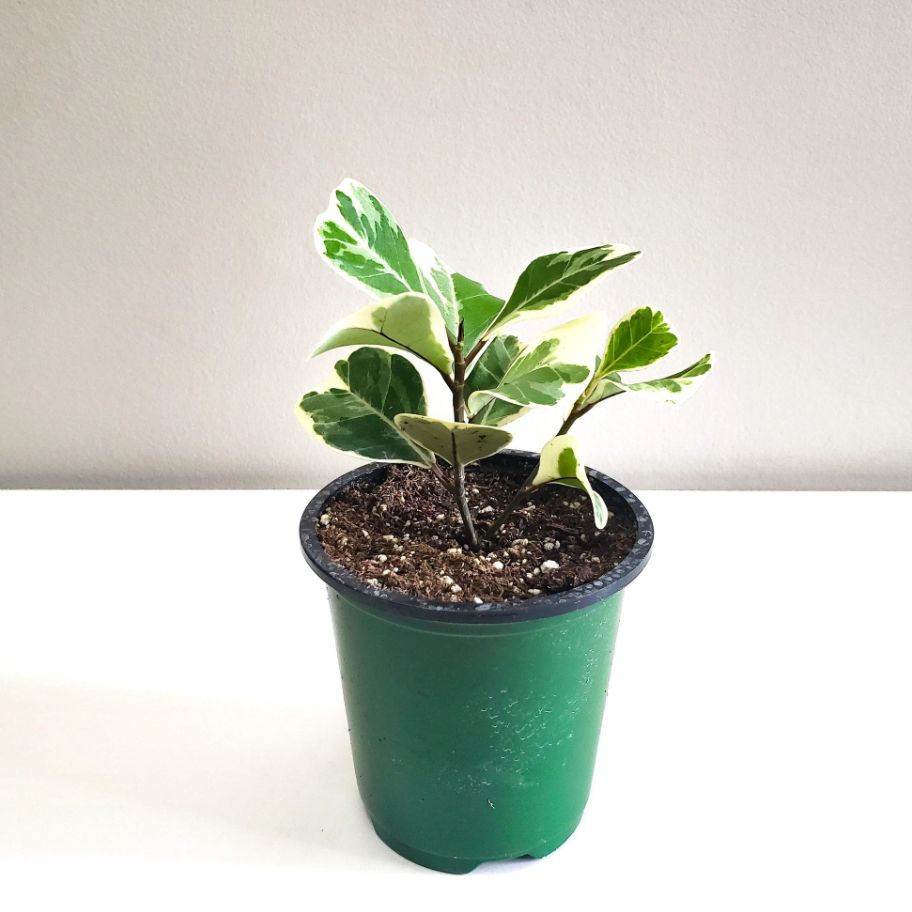
Propagation of the ficus variegated plant is best done during the spring and summer seasons. The method for propagation is through stem cutting.
Steps:
- Make a cut using a pair of disinfected scissors. Ensure the cut is a few inches long with a few healthy leaves at the top.
- Make a hole in an already prepared potting mix and place the base of the stem in it. .
- Water the plant and keep it moist. Place it in a bright location with high humidity.
- The cutting should start rooting after a week or two. Move the plant to its original position and limit its movement.
Common Health Problems/Pests And Diseases
Plants growing in low light and high-moisture areas are prone to pest attacks. Common pests that affect the leaves of this plant include aphids and spider mites. To curb and control these pests, spray your plant leaves with running water. Also, use insecticidal soaps or Neem oil to wash the leaves. This will help deter pests from attacking the plants.
Common health issues include falling leaves and brown leaves. The former is caused by cold weather conditions, while brown leaves can be a result of underwatering.
FAQs
Yes. The sap of this plant is considered toxic to both cats and dogs if ingested. It also causes skin and eye irritation, so it’s advisable to always wear a protective covering while handling this plant.
Brown leaves are caused by underwatering. Leaving the soil to dry out completely without watering for a long time can lead to leaf discoloration.
This is caused by the absence of bright light. Variegated Ficus plants grown under low light conditions can drop their leaves. To handle this, move the plant to a bright location where it can access direct sunlight.
The major difference lies in the color of their leaves. The normal ficus triangularis leaf has a full green color, while the variegated version has a bright green center with a cream yellow border.
Always water the plant whenever the top half of the soil is completely dry. Give the plant a good soak until water starts dripping at the bottom of the pot.

